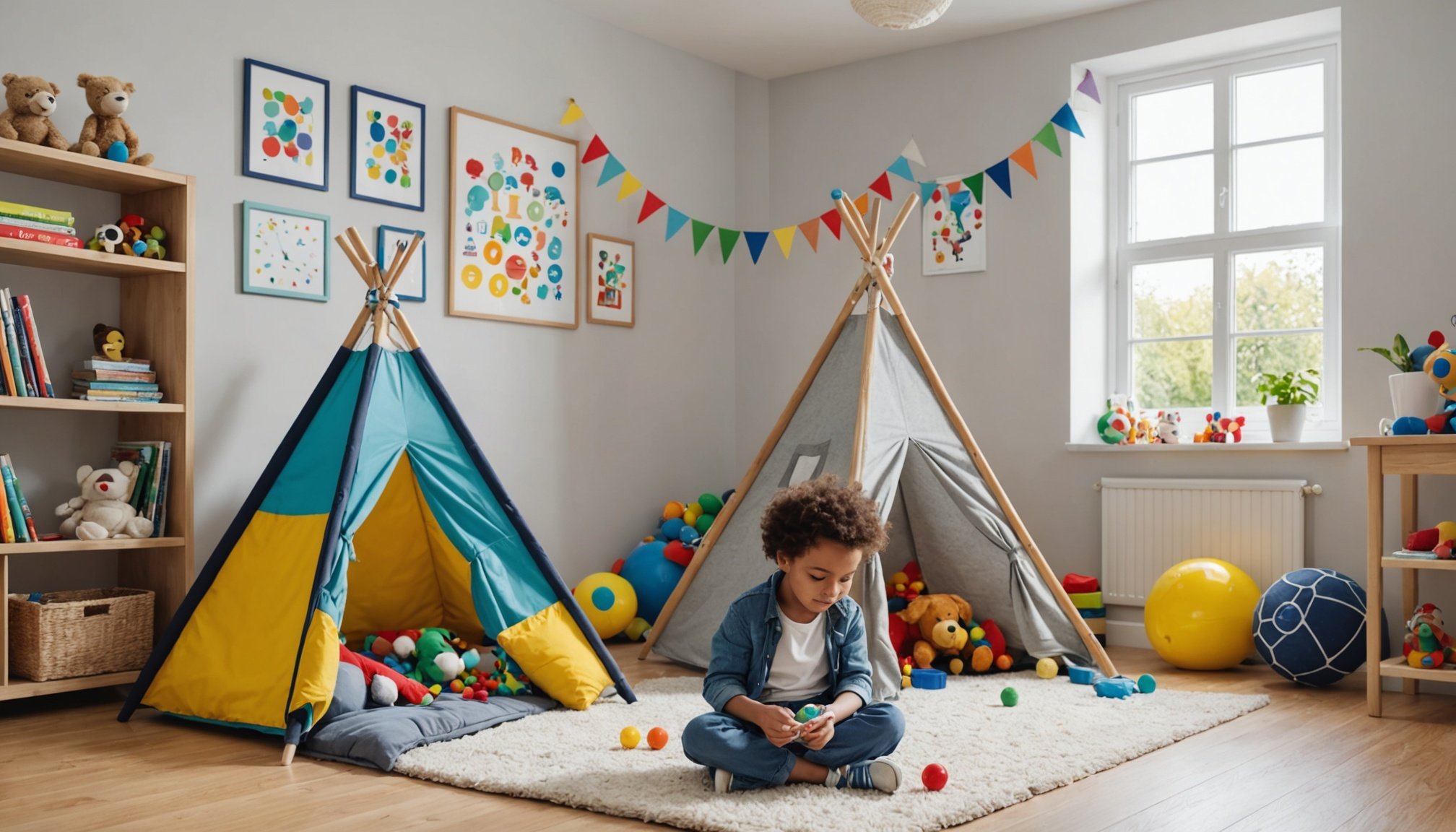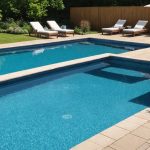Creating a serene environment for your children’s playroom is essential, especially in a semi-detached home where sound travels easily. Effective soundproofing solutions can transform noise into tranquility, allowing kids to enjoy their activities without disturbing the rest of the household—or vice versa. This guide offers practical tips and innovative strategies tailored specifically for UK homes, helping you achieve a peaceful space for both play and relaxation. Let's explore these soundproofing techniques that blend functionality with creativity.
Understanding Soundproofing Basics
Soundproofing is an essential aspect of creating a peaceful environment, especially in spaces like children's playrooms. At its core, soundproofing basics involve strategies to reduce or block unwanted noise, enhancing the overall acoustics of a room. This is particularly important in semi-detached homes where shared walls can lead to noise disturbances.
En parallèle : Elevate your space: must-have luxury décor for homes and yachts
In these homes, common noise sources include footsteps, voices, and even the sound of televisions or music systems. These sounds can easily travel through walls, disrupting the tranquillity of your living space. By focusing on noise reduction, you can significantly improve the quality of life within your home.
One effective approach is to use materials that absorb sound, such as carpets, curtains, or acoustic panels. These materials help in dampening noise, making rooms quieter and more comfortable. Additionally, sealing gaps in doors and windows can prevent sound from leaking in or out, further enhancing the room's acoustics.
A découvrir également : How can you create a stylish yet functional mudroom in a UK country house?
Understanding these soundproofing basics allows homeowners to make informed decisions, ensuring that their living spaces remain serene and conducive to relaxation or play. By prioritising soundproofing, you create a more harmonious home environment.
Assessing Your Playroom’s Current Soundproofing
Before embarking on a soundproofing project, it's crucial to conduct a thorough playroom assessment. Begin by evaluating the existing conditions to understand the level of noise infiltration. This involves using tools like sound level meters to measure noise levels accurately. These devices provide data that helps in identifying the noise evaluation needs of the space.
Once you have the measurements, focus on pinpointing weak points in the current soundproofing. Common areas of concern include thin walls, unsealed windows, and gaps under doors. By identifying these vulnerabilities, you can tailor your soundproofing efforts more effectively.
Next, document the existing materials and structures within the playroom. Note whether the room includes sound-absorbing elements like carpets or curtains. This documentation will guide you in determining what additional materials or adjustments are needed to enhance soundproofing.
By conducting a comprehensive playroom assessment, you gain a clearer understanding of the existing conditions and the specific noise evaluation requirements. This approach ensures that your soundproofing efforts are targeted and effective, ultimately creating a quieter and more serene environment for children to enjoy.
Effective Soundproofing Techniques
When aiming to create a quieter playroom, choosing the right soundproofing techniques is crucial. For those inclined towards DIY methods, several options are available. Simple measures like adding thick rugs or heavy curtains can significantly dampen noise. Installing weather stripping around doors and windows is another effective way to seal gaps that let sound escape or enter.
For more substantial results, consider layering techniques. This involves adding multiple layers of drywall, separated by a damping compound, to walls. This method effectively blocks sound transmission, making it a popular choice for DIY enthusiasts.
On the other hand, professional solutions offer a more comprehensive approach. These services often use advanced materials and techniques, such as installing soundproof windows or specialised acoustic panels. While more costly, professional soundproofing ensures a high level of noise reduction and is ideal for those seeking long-term solutions.
Ultimately, the choice between DIY methods and professional solutions depends on your budget and desired level of soundproofing. By understanding these options, you can select the best approach to create a peaceful environment in your playroom.
Recommended Materials for Soundproofing
Choosing the right soundproofing materials is vital to effectively reduce noise in a playroom. One of the primary considerations is insulation, which can significantly impact sound control. Types of insulation suitable for playrooms include fiberglass and mineral wool. These materials are excellent at absorbing sound and are often used within walls and ceilings to reduce noise transmission.
Another effective option is acoustic panels. These panels are designed to absorb sound waves, thereby reducing echo and improving room acoustics. They come in various styles and designs, making them a practical choice for enhancing both soundproofing and aesthetics.
Additionally, other soundproofing materials can be employed to further dampen noise. These include:
- Carpets: Thick carpets can absorb sound and reduce noise from footsteps.
- Curtains: Heavy, dense curtains can block external noise and prevent sound from escaping the room.
By integrating these soundproofing materials, you can create a more serene playroom environment. Each material offers unique benefits, allowing you to tailor your soundproofing strategy to meet specific needs and preferences.
Step-by-Step Soundproofing Process
Embarking on a soundproofing process for your playroom requires careful preparation and attention to detail. Begin by clearing the room of any furniture and toys to ensure a safe and unobstructed workspace. This initial step is crucial for a smooth installation guide.
Preparing the Playroom
Before starting, inspect the walls, floors, and ceilings for any existing damage. Repairing these areas ensures that the soundproofing materials adhere properly and function effectively. It's also advisable to cover floors with protective sheeting to prevent damage during the home improvement process.
Detailed Installation Steps
For wall soundproofing, start by applying a layer of acoustic sealant around windows and doors to block sound leaks. Next, attach soundproofing panels or install additional drywall layers using a damping compound. These materials work together to significantly reduce noise transmission.
For floors, lay down thick carpets or rugs to absorb sound. If possible, consider installing underlayment beneath the flooring for added noise reduction.
Ensuring a Clean and Safe Work Environment
Throughout the soundproofing process, maintain a tidy workspace by regularly clearing debris and using proper safety gear. This approach not only ensures safety but also enhances the efficiency and effectiveness of your home improvement efforts.
Cost Estimates for Soundproofing
When considering soundproofing costs, it's important to factor in both materials and labour. Materials such as acoustic panels, insulation, and sealants can vary widely in price, depending on quality and brand. Typically, budget planning should account for these differences to avoid unexpected expenses.
For those seeking budget-friendly soundproofing options, DIY solutions can significantly reduce costs. Simple measures like adding rugs, curtains, and weather stripping are cost-effective and can be installed without professional help. However, for more substantial soundproofing, such as adding layers of drywall or specialised acoustic panels, professional installation might be necessary, increasing the overall costs.
Despite the initial investment, effective soundproofing can lead to long-term savings. By reducing noise pollution, you increase the comfort and value of your home, potentially lowering future renovation needs. Additionally, soundproofing can enhance energy efficiency by sealing gaps that might otherwise let air escape, further contributing to savings.
In conclusion, when planning for soundproofing, consider both immediate expenses and the potential for future savings. This comprehensive approach ensures that your financial considerations align with your soundproofing goals.
UK-Specific Building Regulations and Considerations
When undertaking a soundproofing project in the UK, understanding and adhering to UK building regulations is crucial. These regulations ensure that any renovations meet safety and structural standards, protecting both the property and its occupants. For soundproofing, specific guidelines focus on materials and methods that effectively reduce noise transmission while complying with fire safety and insulation standards.
Compliance with these regulations is not just a legal requirement but also a safeguard against potential future issues. Non-compliance can lead to fines or the need to undo completed work, which can be costly and time-consuming. Therefore, it's essential to integrate compliance checks into your renovation plans from the outset.
Obtaining planning permissions is another critical step, especially for extensive modifications. Start by consulting local authorities to understand the necessary approvals for your project. This includes submitting detailed plans and specifications that demonstrate adherence to relevant regulations.
To streamline the process, consider hiring a professional who is familiar with UK building regulations. They can provide valuable insights and ensure that your project meets all necessary criteria, avoiding delays and complications.
Real-Life Case Studies and Examples
Exploring soundproofing case studies provides valuable insights into the practical application of soundproofing techniques. One notable success story involved a family in a bustling urban area who faced persistent noise from street traffic. By implementing a combination of acoustic panels and double-glazed windows, they achieved a significant reduction in noise levels, enhancing their home's tranquillity.
In another instance, a semi-detached homeowner tackled the challenge of soundproofing shared walls. The project involved layering drywall with a damping compound, which effectively blocked sound transmission. This before and after transformation was remarkable, with noise levels dropping by over 50%.
Throughout these projects, various challenges arose, such as budget constraints and material selection. However, lessons learned included the importance of thorough planning and choosing the right materials for specific noise issues.
Visual comparisons of soundproofing results often highlight the stark contrast between untreated and treated spaces. Before soundproofing, rooms are plagued by echoes and external noise. After treatment, these spaces become serene and acoustically balanced, showcasing the profound impact of effective soundproofing. These examples underscore the importance of tailored solutions in achieving optimal results.
Enhancing Acoustics in the Playroom
Creating a playful environment in your playroom involves more than just fun decor—it requires thoughtful acoustics enhancement. Good acoustics are crucial for fostering a space where children can enjoy themselves without overwhelming noise levels.
Importance of Acoustics for a Playful Environment
Proper acoustics contribute to a more enjoyable and less chaotic atmosphere, allowing children to play and interact comfortably. By managing sound levels, you ensure that the playroom remains a place of joy rather than noise-induced stress.
Design Tips for Creating an Engaging and Sound-Friendly Space
To enhance the acoustics of your playroom, consider incorporating soft furnishings like cushions and bean bags, which absorb sound. Arranging furniture strategically can also help break up sound waves, reducing echo. Opt for materials like cork or rubber flooring, known for their sound-dampening properties.
Recommended Products for Acoustic Enhancement
Invest in products specifically designed for acoustics enhancement, such as acoustic ceiling tiles and wall panels. These can significantly reduce noise and improve sound quality. Additionally, decorative elements like fabric wall hangings not only add to the room's aesthetic but also contribute to sound absorption. By integrating these design tips and products, you create a harmonious and engaging playroom environment.












